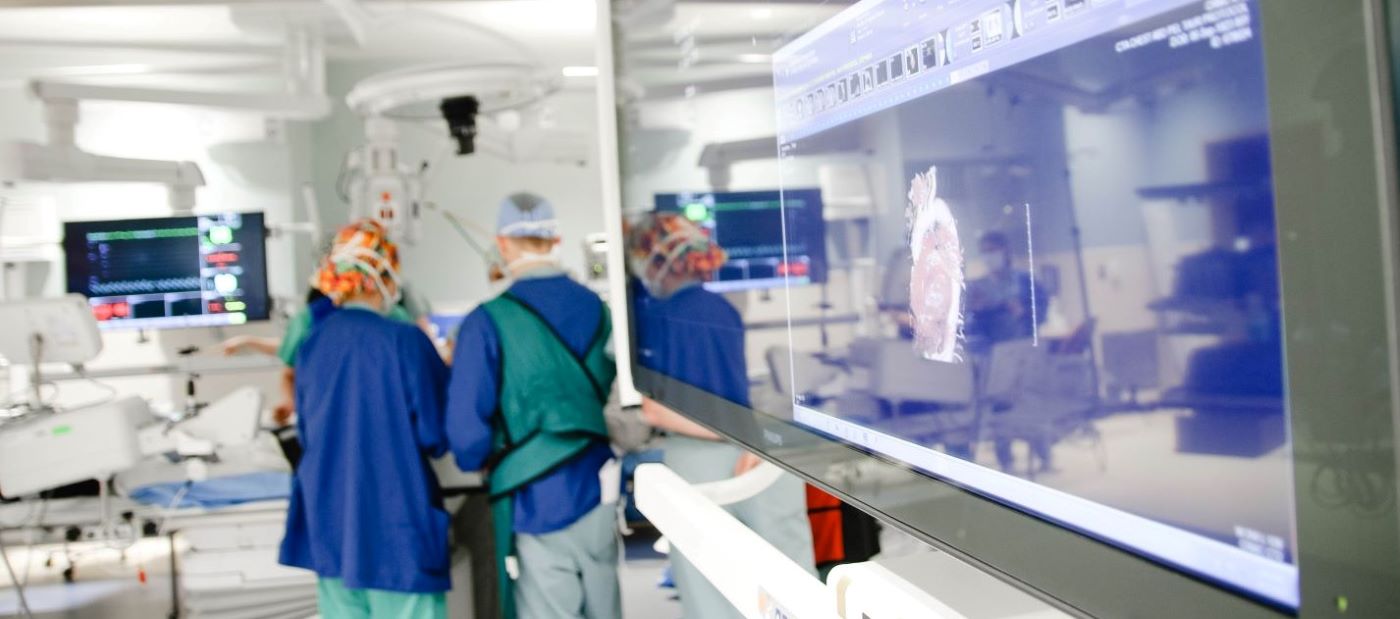Heart Rhythm Disorders
Atrial fibrillation (AFib) is a common form of arrhythmia, or irregular heartbeat, that can lead to blood clots, stroke or heart failure if left undiagnosed or untreated. In AFib, the top two chambers of the heart do not contract properly, causing blood to pool in these atria. Understanding the heart’s electrical system is important in understanding AFib. Electrical impulses are sent with each heartbeat alerting the heart muscles to contract in sequence. When these impulses get delayed or out of sync, AFib can result. In paroxysmal atrial fibrillation (PAF), the faulty electrical signals and rapid heart rate begin suddenly and then stop on their own. Symptoms can be mild or severe, and stop within about a week, though usually in less than 24 hours.
Symptoms can include:
- Irregular or rapid heartbeat
- Heart palpitations
- Dizziness, sweating and chest pain or pressure
- Shortness of breath or anxiety
- Tiring easily during exercise or activity
- Fainting
Who is at risk for AFib?
Any person can develop AFib and millions of Americans are affected. Men are diagnosed more often than women and the risk increases with age. This is because the risk of heart disease and other conditions that can cause AFib also increase with age.
AFib is more common in people with:
- High blood pressure
- Coronary heart disease
- Congenital heart defects
- Rheumatic heart disease
- Pericarditis
- Mitral valve problems
- History of heart attack
- Underlying heart disease
- Drinking alcohol in excess
- Sleep apnea
- Chronic conditions – having conditions such as diabetes, thyroid problems or asthma can put patients at risk for developing AFib
Arctic Front® CryoAblation
CryoAblation prevents unwanted electrical currents that contribute to paroxysmal atrial fibrillation (PAF). The procedure uses a balloon to deliver a refrigerant to the tissue, disabling these currents.The procedure is performed using a specially-designed catheter to target specific tissues and isolate the pulmonary vein. The catheter is inserted through a small groin incision and threaded into the left atrium of the heart. The balloon is placed at the juncture of the atrium and the pulmonary vein and the refrigerant is used to scar the area enough to stop the problematic electrical impulses.
Many patients who have been treated with Arctic Front® CryoAblation have reported improved quality of life. They have also indicated a reduction in symptoms such as shortness of breath, fatigue and weakness.
CaroMont Heart & Vascular is the first in the region to offer Arctic Front® CryoAblation for the treatment of recurrent symptomatic PAF.
Click here to download our brochure.

